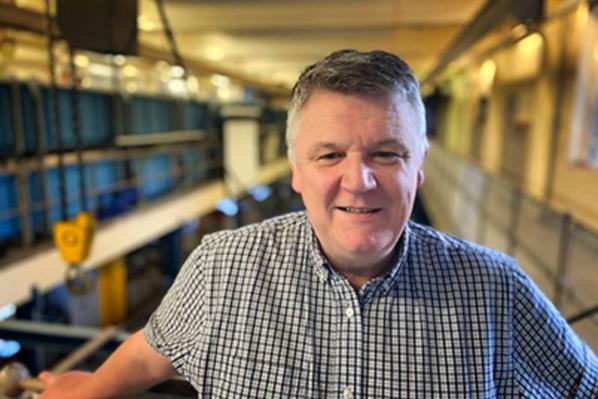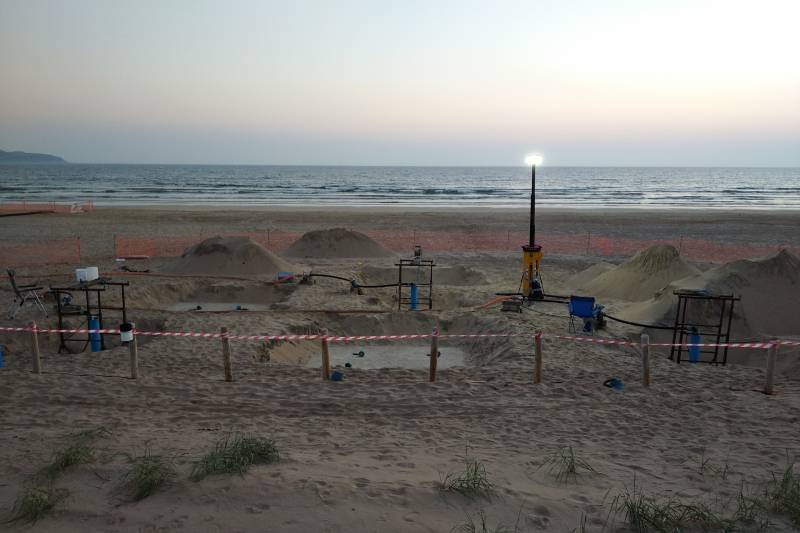SALINA - SALine INtrusion in coastal Aquifers
Seawater intrusion is a major issue worldwide, as coastal aquifers act as the primary source of drinking water for more than one billion people. Mixing of more than 1% seawater with fresh water proves sufficient to prevent its use as drinking water. Consequently, tracking seawater ingress into aquifers and preventing its entry into freshwater supplies is essential and provides the fundamental driver of the SALINA’s research. Also, with climate change and projected population increases in coastal areas, this problem is anticipated to become more pressing over the next decades. Understanding the processes giving rise to seawater intrusion underpins scientifically defensible management strategies. Appropriate monitoring tools and protocols to warn against breakthrough of saltwater provides a crucial element for resource management. SALINA will fundamentally aid in this process.
The research into Saline Intrusion in Coastal Aquifers has been funded by an EPSRC Standard Research (Grant No. EP/R019258/1) in collaboration with Imperial College London to the value of approximately £1.5m
https://gtr.ukri.org/projects?ref=EP%2FR019258%2F1#/tabOverview
Recent papers published by the Research group:
Etsias, G.; Hamill, G.A.; Águila, J.F.; Benner, E.M.; McDonnell, M.C.; Ahmed, A.A.; Flynn, R. ‘The impact of aquifer stratification on saltwater intrusion characteristics. Comprehensive laboratory and numerical study’. Hydrological Processes 2021, in press.
Etsias, G., Hamill, G. A., Campbell, D., Straney, R., Benner, E. M., Águila, J. F., . . . Flynn, R. ‘Laboratory and numerical investigation of saline intrusion in fractured coastal aquifers’. Advances in Water Resources 2021, 103866. DOI: 10.1016/j.advwatres.2021.103866
Etsias, G.; Hamill, G.A.; Benner, E.M.; Águila, J.F.; McDonnell, M.C.; Flynn, R.; Ahmed, A.A. ‘Optimizing Laboratory Investigations of Saline Intrusion by Incorporating Machine Learning Techniques’. Water 2020, 12, 2996. DOI: 10.3390/w12112996
Águila, J.F., McDonnell, M., Flynn, R., Ruffell, A., Benner, E., Etsias, G., Hamill, G., Donohue, S., 2020. Application of Electrical Resistivity Tomography and Ground Penetrating Radar to assess salinity in a coastal aquifer with tidally-driven saline recirculation cell. EGU General Assembly 2020, 4-8 May 2020, EGU2020-18138, https://doi.org/10.5194/egusphere-egu2020-18138
McDonnell, M., Águila, J.F., Hamill, G., Flynn, R., Etsias, G., Rowan, T., Benner, E., 2021. Tidal monitoring on sandy beaches using perpendicular time-lapse photography, EGU General Assembly 2021, 19–30 Apr 2021, EGU21-2802, https://doi.org/10.5194/egusphere-egu21-2802
Eric M. Benner, Georgios Etsias, Gerard Hamill, Jesús Fernández Águila, Raymond Flynn, Mark C. McDonnell. Optimizing Image Analysis Processing in Thin Transparent Aquifers: Application to Pixel Wise Regression of Saltwater Intrusion. European Geophysical Union General Assembly 2020 (EGU 2020); Conference Proceedings.
The SALINA project is carried out by Queen's University Belfast in collaboration with Imperial College London (https://www.imperial.ac.uk/).
The SALINA research team from Queen's University Belfast also works in collaboration with the British Geological Survey (https://www.bgs.ac.uk/) to install a PRoactive Infrastructure Monitoring and Evaluation (PRIME) system at Magilligan. This system monitors the position of fresh/saltwater interface in the coastal aquifer using high resolution four-dimensional (time-lapse in 3D) Electrical Resistivity Tomography (ERT).
The SALINA team also has close collaborations with researchers at University College Dublin (https://www.ucd.ie/) and Brunel University London (https://www.brunel.ac.uk/) as well as internationally with universities in Sri Lanka, Bangladesh and China.

LEAD PROJECT INVESTIGATOR Gerard Hamill is the Head of Civil Engineering at Queens, part of the School of Natural and Built Environment, and a Professor of Hydraulics and Water Engineering. He has accumulated over 30 years of experience in research, and has a track record of research funding from the Engineering and Physical Science Research Council (EPSRC), EU FP7, Innovate UK and Knowledge Transfer Partnership (KTP).
SALINA contributes to the Sustainable Development Goal 6 “Ensure availability and sustainable management of water” (https://www.un.org/sustainabledevelopment/water-and-sanitation/) and has strong influences on SDG 13 “Take urgent action to combat climate change and its impacts” (https://www.un.org/sustainabledevelopment/climate-change/)
-
Facebook: https://www.facebook.com/pg/Salina-Saline-Intrusion-in-Coastal-Aquifers-100489411589413/about/
Project email account: salina@qub.ac.uk

